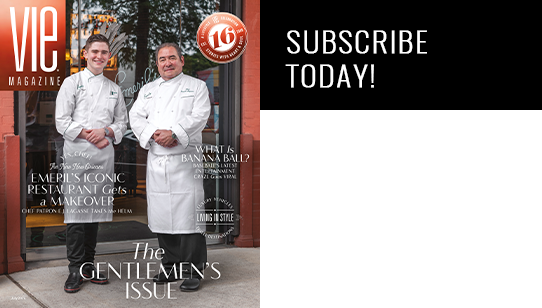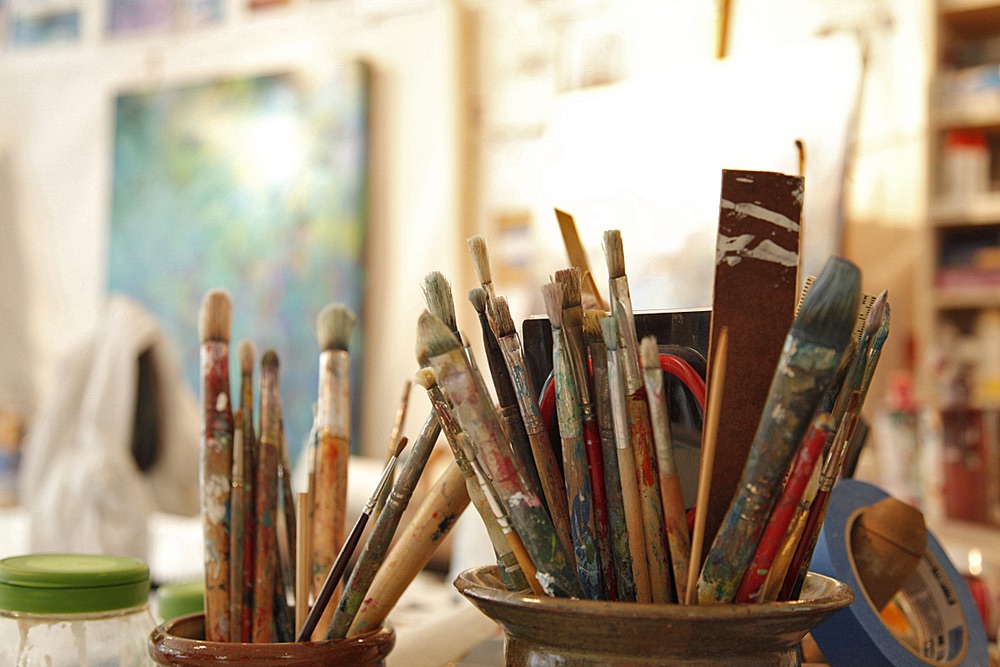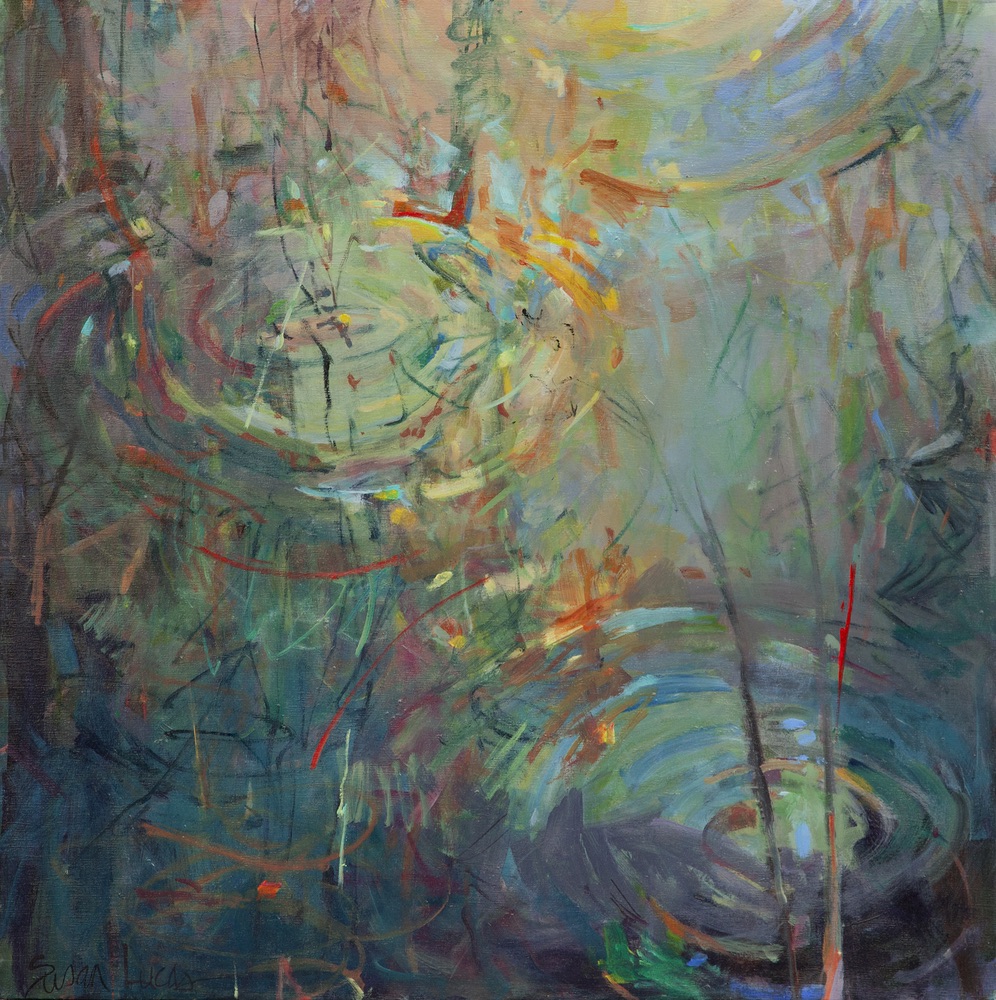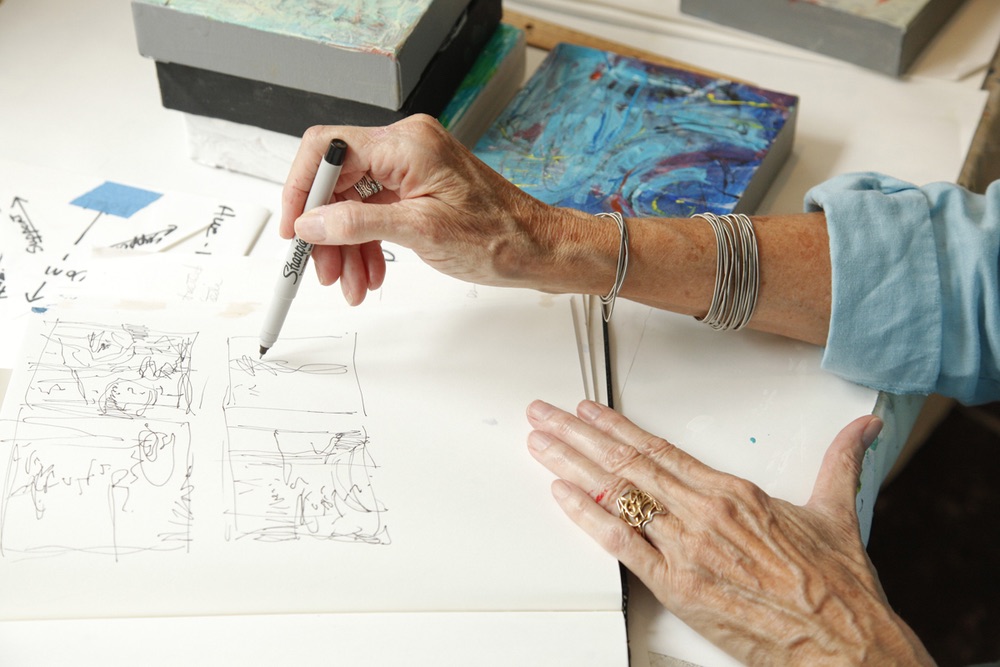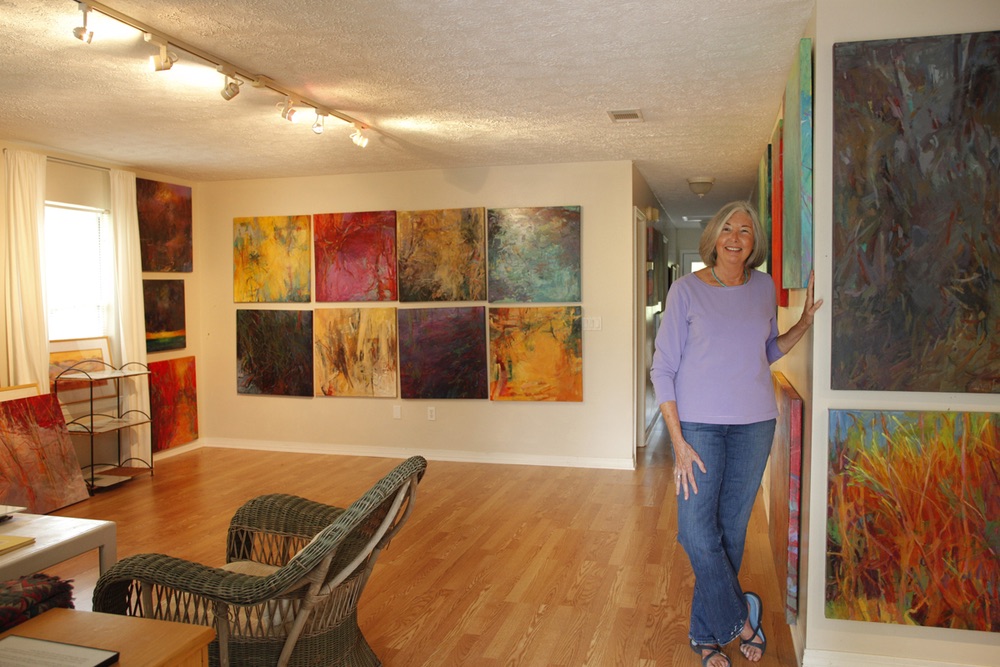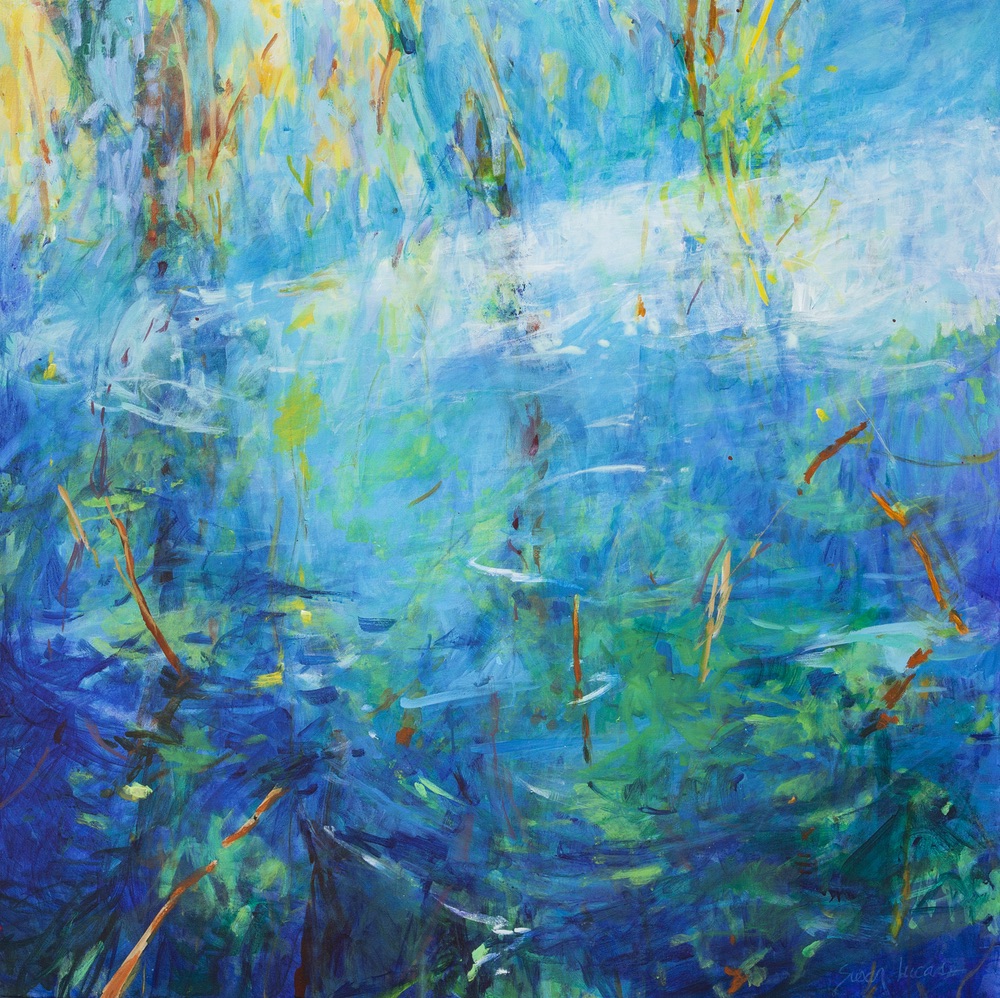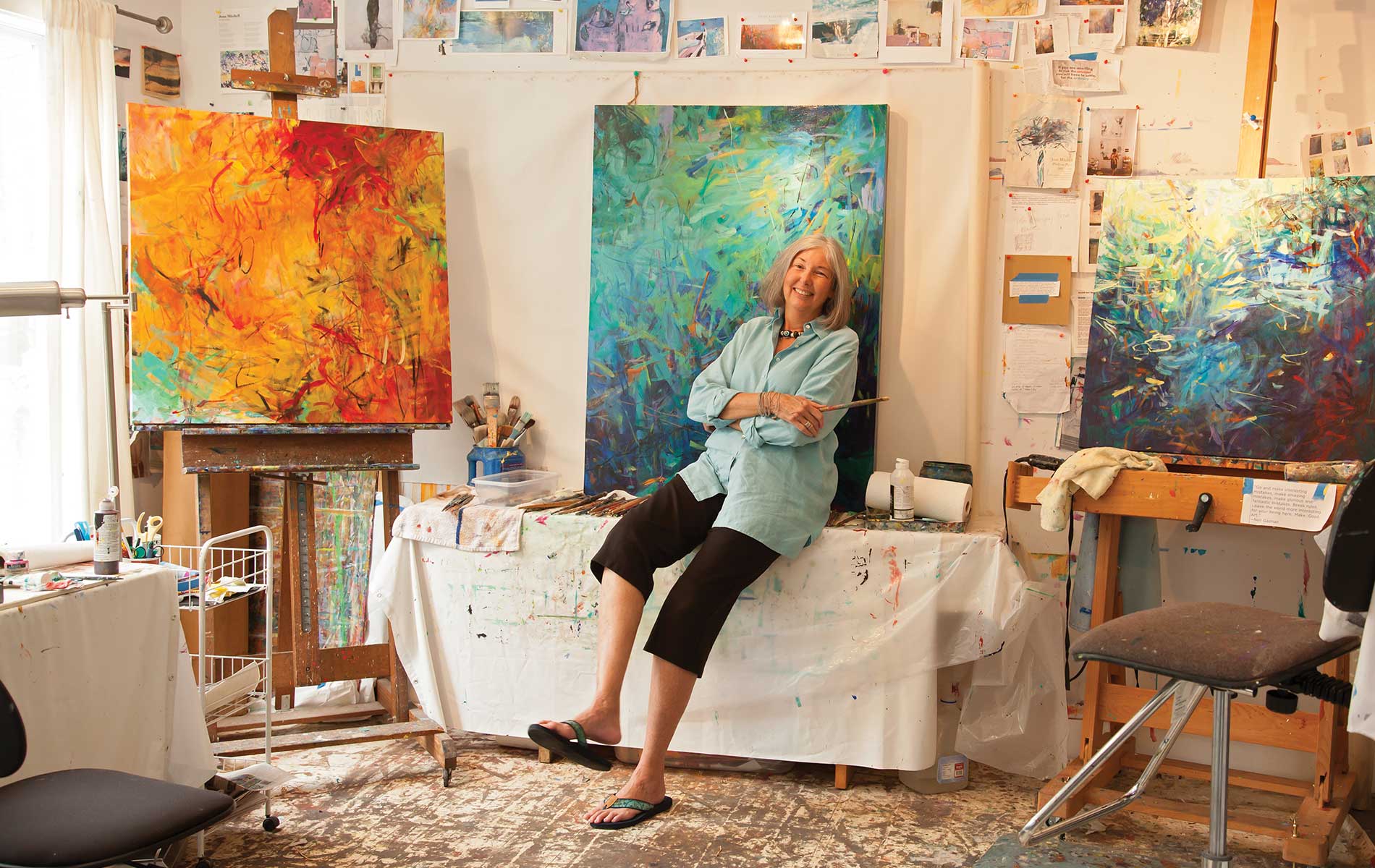
vie-magazine-susan-lucas-feature
The Faces of an Artist
By Anne Hunter | Photography by Jack Gardner
Art is the funnel, as it were, through which spirit is poured into life.
―Thomas Mann
When I left Fonville Press in 2006, I did not know that Ceruleans in WaterColor and the artists of 30-A were waiting for me. Fonville Press is a beautiful coffee shop situated in Alys Beach, and no expense was spared in the design of its fixtures, finishes, style, or decor. In contrast, Ceruleans was an empty retail space tucked into a corner of WaterColor that would later be transformed into a haven for local artists.
In my initial meeting with The St. Joe Company, the developer of the property, the executives asked, “What do you envision for this space?” My mind flashed forward into what would become Ceruleans: “There is a stage and art is on the walls. I see books, coffee, wine, and tapas, people everywhere—and there is music. This is a place for community and artistic expression.” I wrote a proposal, and Ceruleans opened three weeks later. I used my budget to purchase an espresso bar, paint the walls, and install bookshelves and a stage. I called my friends and said, “I need art.” Word spread fast, and soon artists were showing up at my door with their work in hand. We hung the pieces the day before the café opened.
Soon, Susan Lucas’s art graced the walls of Ceruleans—just as it had at Catherine Dickson Fine Art, Page O’Connor Fine Arts, the Beverly McNeil Gallery, Eileen West Gallery, and, most recently, the Hidden Lantern Gallery and Gordie Hinds Contemporary Art (mostly galleries along Scenic Highway 30-A). Chromatically, Susan’s abstractions felt like the chords of a well-composed sheet of music, which imbued Ceruleans with a silent understanding. There was a syncopation of sound emanating from her work that made you want to dance, but it would be eight more years before I would uncover the sources of her inspiration—her treasure chest of sound, composition, and color.
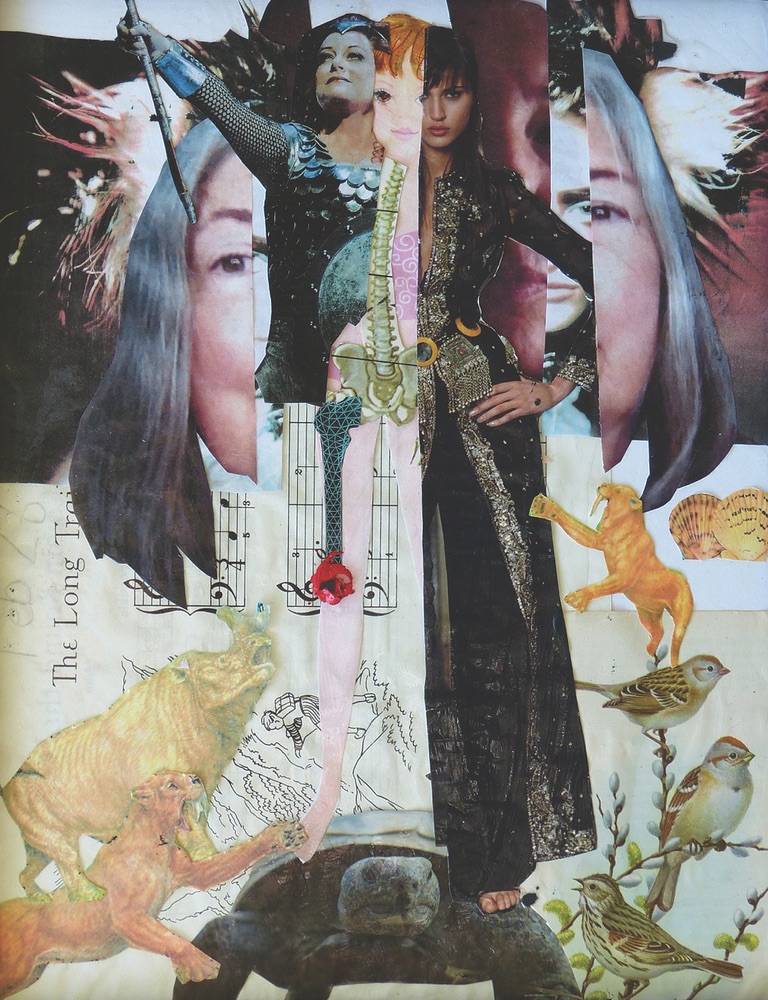
Self-Portrait/Collage, 18” x 12”
My self-portrait this year. I do like the idea that all those personae live inside all of us. I carry within myself on this continuing journey the young girl, the warrior woman, the sexy lady, the mysterious woman. But they are hidden from view. The rest, I can sum up by saying they address the challenges of aging.
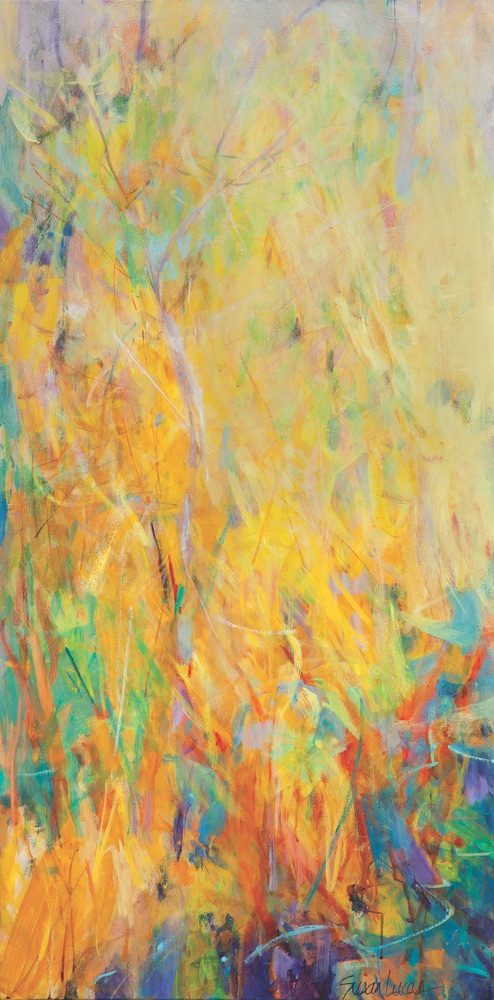
Lakeside Light, 48” x 24”
This summer, Susan and I reconnected at Grayt Grounds of Monet Monet, a charming 30-A café in Grayton Beach, over our passion for Der Ring des Nibelungen, a series of four epic operas by the German composer Richard Wagner. It’s called the Ring Cycle, and it’s rumored that J. R. R. Tolkien drew inspiration from Wagner when he wrote The Lord of The Rings trilogy. Tolkien refuted Wagnerian gossip saying that “Both rings were round, and there the resemblance ceases.” Susan had read my VIE blog that referenced my Ring Cycle moments at the Metropolitan Opera and recounted her own experience with Siegfried, Siegmund, and Brünnhilde. As we dished on Wagner, opera, art, and family, I thought about another resemblance between Wagner’s and Tolkien’s great works: the ring bearer in each case was one who possessed a mastery of his or her own world. I contemplated Susan Lucas and wondered about the epic stages of her life. It seemed to me that she, like Frodo and Siegfried, was also a ring bearer. Unlike them, she had left behind the curse of the ring and instead had forged a path that few others have. She had discovered the artist’s way, whereby the power of the ring is purely used for creative pursuits.
I asked Susan about her journey into art and on becoming an artist, which led to a series of conversations over the course of the summer that would forever fill me with inspiration.
Susan Lucas on the way of the artist:
“In terms of a journey and my art, part of the journey has been moving slowly from realism to abstraction. My theory, based on my experiences, is that the artist’s journey is a classic bell-shaped curve. When we begin, we know very little but want to try everything, so we go to classes and try oils and watercolors and pastels and drawing and sculpture and so forth. Then, we begin to shed the things that don’t fit us comfortably, and the curve eases back down as we eliminate, refine, and focus.
“I think my life is pretty much the same way, as I have tried different ways to be: teacher, community leader, journalist, and more. But at this point I am so delighted at being wife, mother, grandmother, friend, beach bum … and my art is an expression of those experiences.
“Relevant to that, last year one of my teachers and mentors, Katherine Liu, was invited to give the keynote address at the Invitational Exhibition of Contemporary International Watermedia Masters in Nanjing, China. Her topic was how artists move from painting realistically to abstractly, and she used my old work to illustrate the process.”
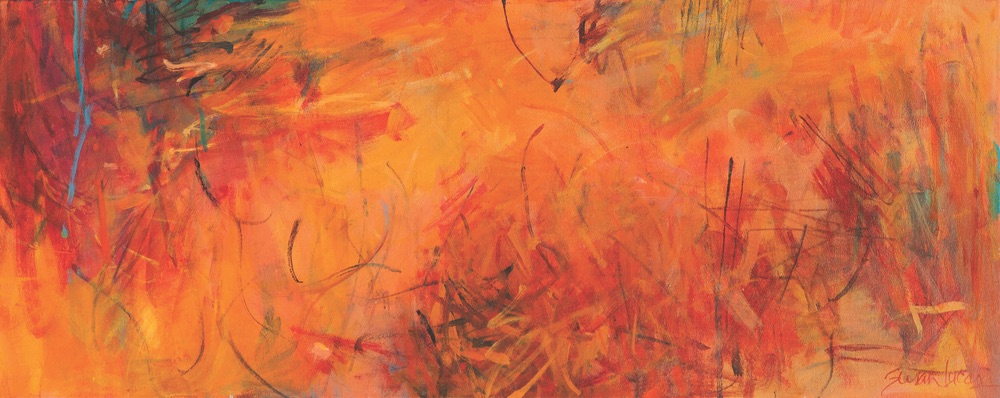
Slough 5, 12” 36”
On teaching:
“It seems that I always have taught. Not that I am such a master, but I work hard and learn things, and love to pass on what I have learned to others, making their art journey easier, I hope. Usually I teach on a topic, such as color collage or design, to a class of five to fifteen students. For several years, I taught five students at a time in my studio. Every week, I had a lesson or topic for study and an exercise for them to do, then each person painted what he or she wanted to, hopefully applying the lesson learned that day.
“Now I am focused on being a painting coach. I think it is the most effective way to help someone discover his or her unique way to make art and how to make that next step. We look at their art and discuss their artistic interests, hopes, desires, and heroes, and develop a plan to enhance the strengths and explore possibilities.
“When I teach, I quote the artist and teacher William Christenberry: ‘Just as every person has a unique handwriting and a particular way of walking, so every person has a unique way that they are built to make art, and my job is to help you discover that.’ That is my approach to teaching, but also it describes the objective of my art journey: to discover the unique way that I am meant to make art. And that is another challenging journey, because how do we know what that is? The process of learning and growing as an artist never ends. We are always looking for that next step to progress or wondering, ‘What would happen if…?’ This is one of the great things about a life in art.”
On music and painting:
“Relevant to my musings and why I always paint to music, I read this quote (by Keith Bond) and saved it because it is so true, at least for me: ‘Memory and emotion are closely linked to creativity, which leads to meaningful works of art that have authenticity. Music is a powerful way to tap into those memories and emotion.’”
On collaboration:
“Being with other artists helps the artistic process, too. I love my artist friends here, and every year in March and November I go to an art workshop and retreat. Part of the appeal is working with one of my mentors who helps me progress, but often I go to paint in the independent studio, pursuing my own direction. The chat with the other artists there and the relationships we have formed are part of the stimulation and the pleasure, too. And, of course, there is the great aspect of total immersion in the creative process and being away from the distractions of life.”
“I am a believer in looking at great art. Just looking at art—all kinds, the kind you like and the kind you don’t get yet—educates the eye and, as we discussed, you ‘see’ things looking at the actual work of art that is impossible with a reproduction. Looking at art is crucial to growing as an artist. I try to get to museums as much as possible: the Met and MOMA in New York; the Hirshhorn and the Corcoran in DC; and the National Gallery, the Tate, and others near the British Museum in London. There was a time when I was at the British Museum with my sketchbook almost every day. Whatever city I am in, I find the art museum and there I go. Last year, my wonderfully supportive husband and I went to DC just to see the Richard Diebenkorn Ocean Park series at a rare exhibit.”
I have painted in oils, pastel, watercolor; I have spent a lot of time drawing with charcoal, pencil, ink, crayon … I have done print making, sculptures, and painted en plein air … I have painted the figure, still lifes, and conceptual abstracts.
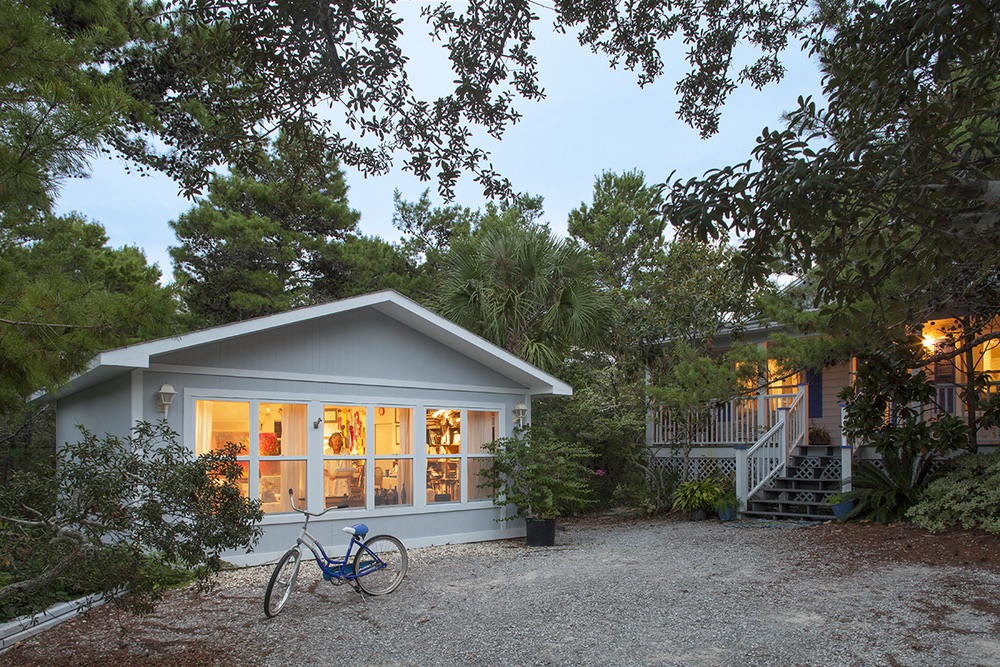
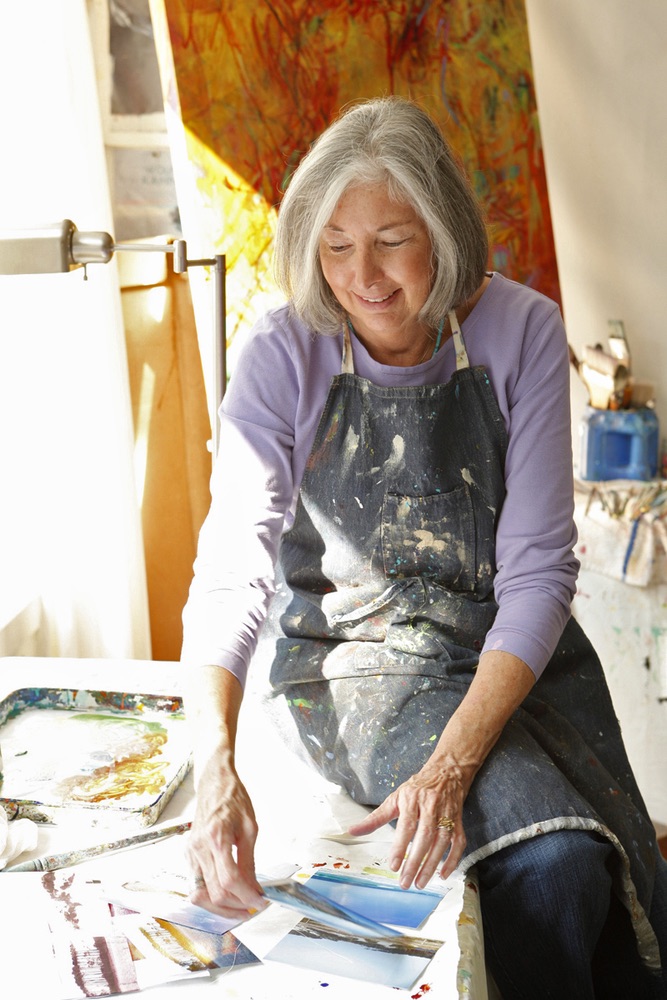
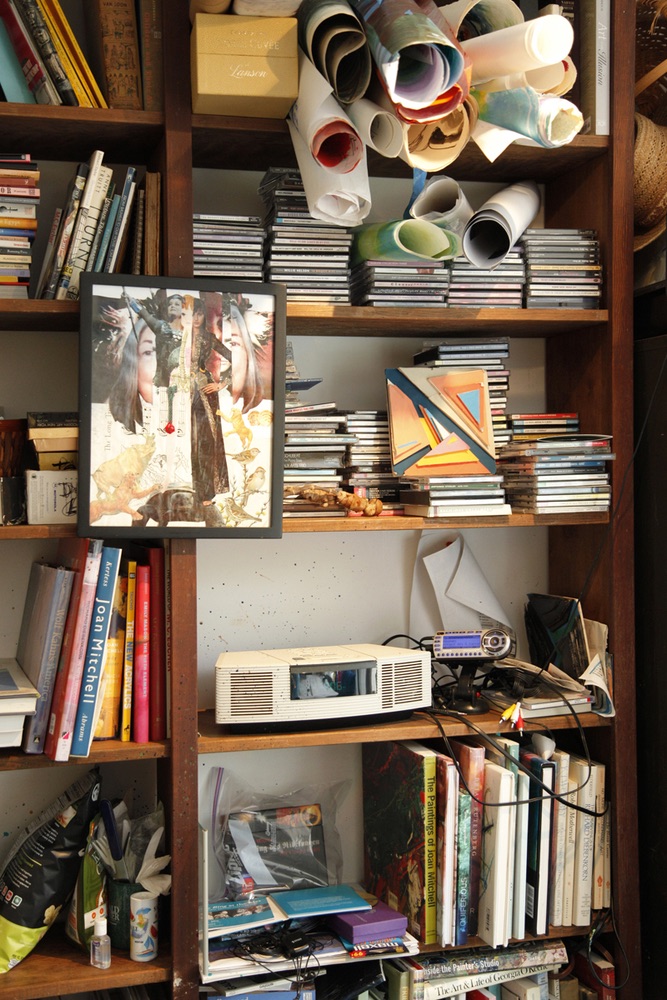
On the 30-A art scene:
“Since I first moved here in 1999, the thing people have often commented on is how the change in my life was reflected in my art—something I didn’t realize until after it happened. Pre-move to Florida, my paintings were dark landscapes, partly reflecting the reality of the Tennessee hills, valleys, and gray weather, but largely expressing a dark and difficult time in my life. Once in Florida, color and light exploded on the paper and canvas, and my use of the color black disappeared.
“In the early days of the art scene on 30-A, there were fewer of us and less going on. We all knew each other and supported each other. There was the Cultural Arts Alliance, ArtsQuest, and the Women’s Art Network, which was fairly new at that time. It was a monthly gathering of female artists where we shared food and talked about art—a marvelous institution. Lots of friendships made and opportunities shared.
“There were many great galleries then, as now. There have been so many openings through the years for many artists, who, like me, were always drawn to 30-A by its incredible beauty: Nina Fritz, Donna Burgess, Woodie Long, Marti Schmidt. Sue Foster had a gallery in Grayton, just behind the Red Bar. She and Jan Clarke created ArtsQuest, which was first held on the streets of Grayton.
“One of my greatest friendships here with Claire Bannerman began four decades before I actually moved to 30-A. Claire’s parents and my parents moved here at about the same time in the 1960s. My mother and Claire’s mother, Grace Bannerman, first became friends and, through them, Claire and I forged a friendship. Claire and I didn’t see each other often in those days but kept up through our mothers until we both moved here about the same time in the late ’90s. We’ve been close ever since, and we both reminisce about taking our babies to play in Redfish Lake, where we would spend hours soaking up the sun and the beach. We were both involved in the arts then, and when we reconnected in the 1990s, we became involved with ArtsQuest. Those were the early days, and we like to remember all the ‘old timers’ who made and promoted the arts at the beach.”
My current focus is entirely the abstracted landscape painted in acrylic or in collage. I am finding great satisfaction in this body of work. I have more ideas to try than I have hours of the day or energy to create.
On passion:
“I think the underlying force for me is passion. I think my love of opera is that it has so much passion, and through music it connects that to its listeners. I have a passion for making, sharing, and encouraging art. I have a passion for life that has led me to make changes that were difficult and guides me on the path as the journey continues.”
— V —
Share This Story!
KEEP UP WITH THE LATEST STORIES FROM VIE


